Melissa Cody
Webbed Skies
04 Apr - 09 Sep 2024
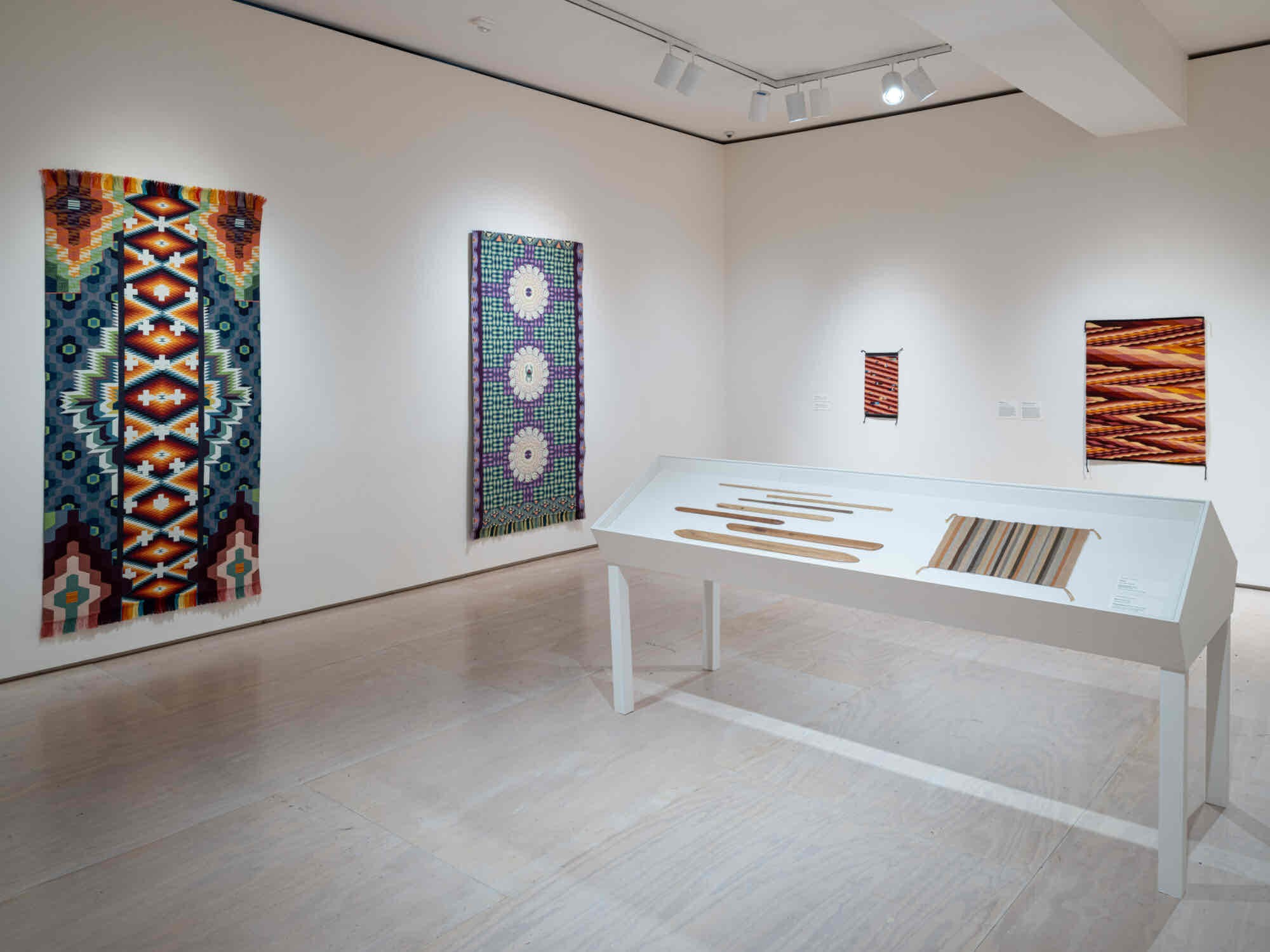
Installation view of Melissa Cody: Webbed Skies, on view at MoMA PS1 from April 4 through September 2, 2024. Photo: Kris Graves
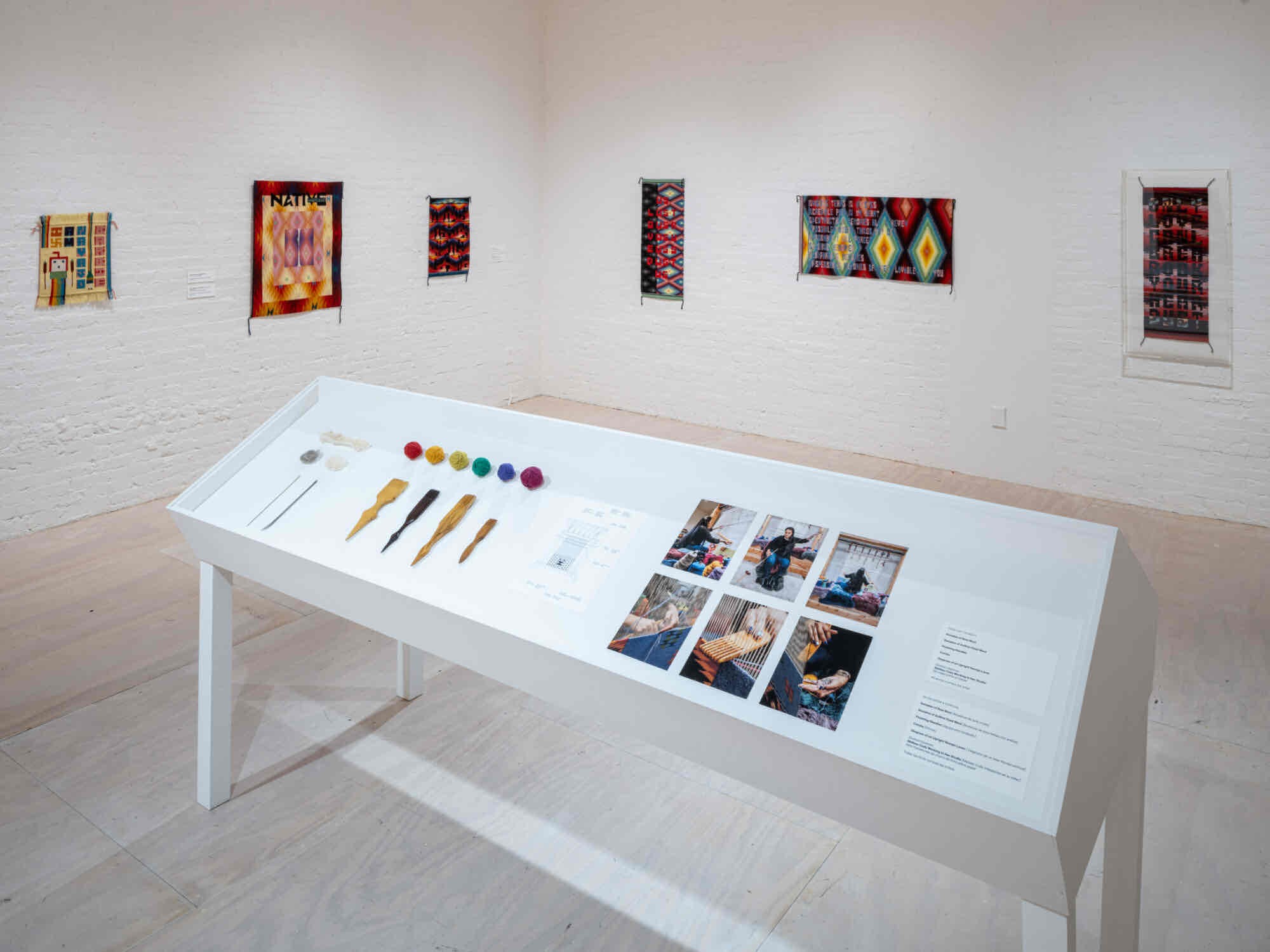
Installation view of Melissa Cody: Webbed Skies, on view at MoMA PS1 from April 4 through September 2, 2024. Photo: Kris Graves
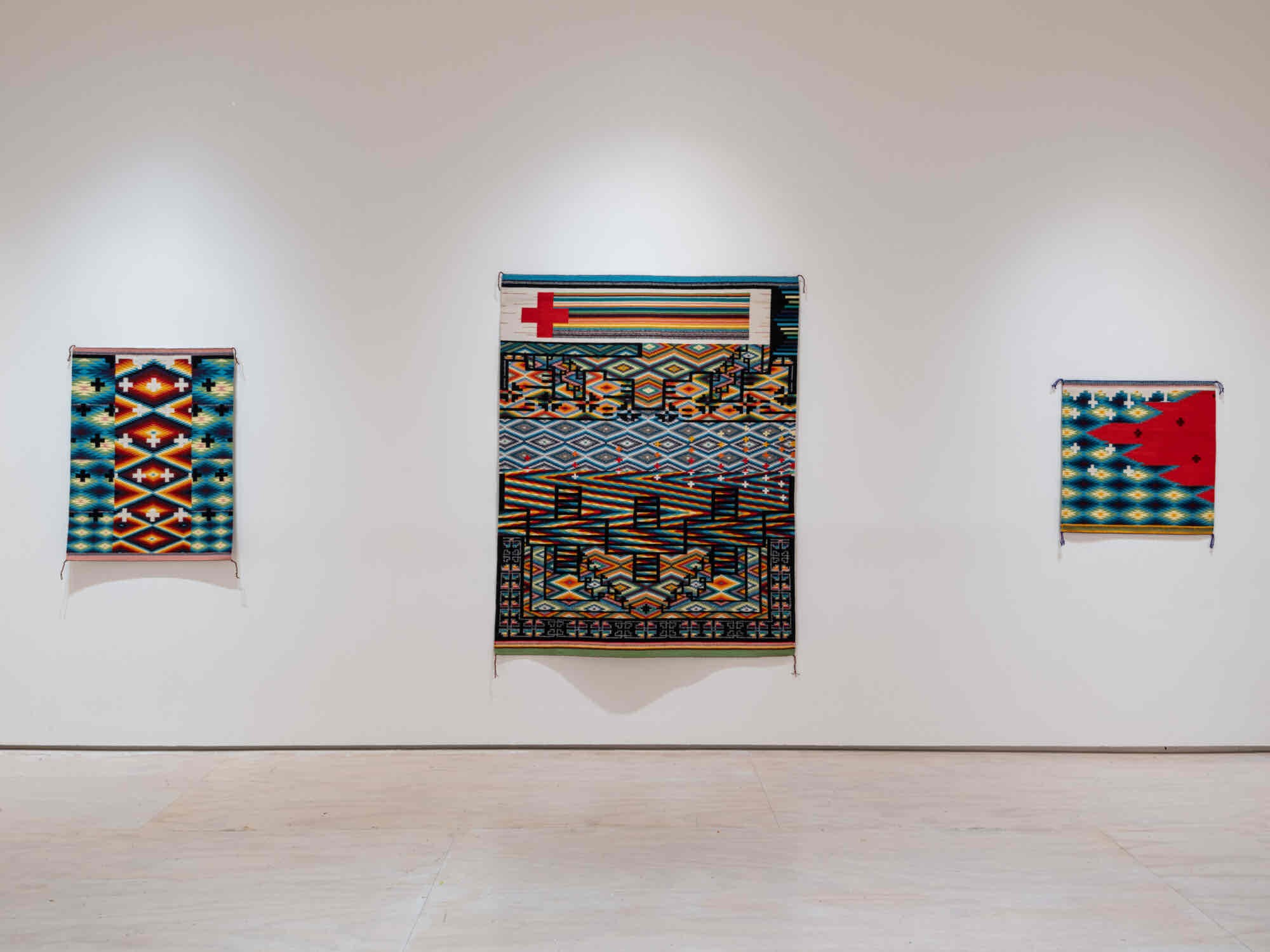
Installation view of Melissa Cody: Webbed Skies, on view at MoMA PS1 from April 4 through September 2, 2024. Photo: Kris Graves
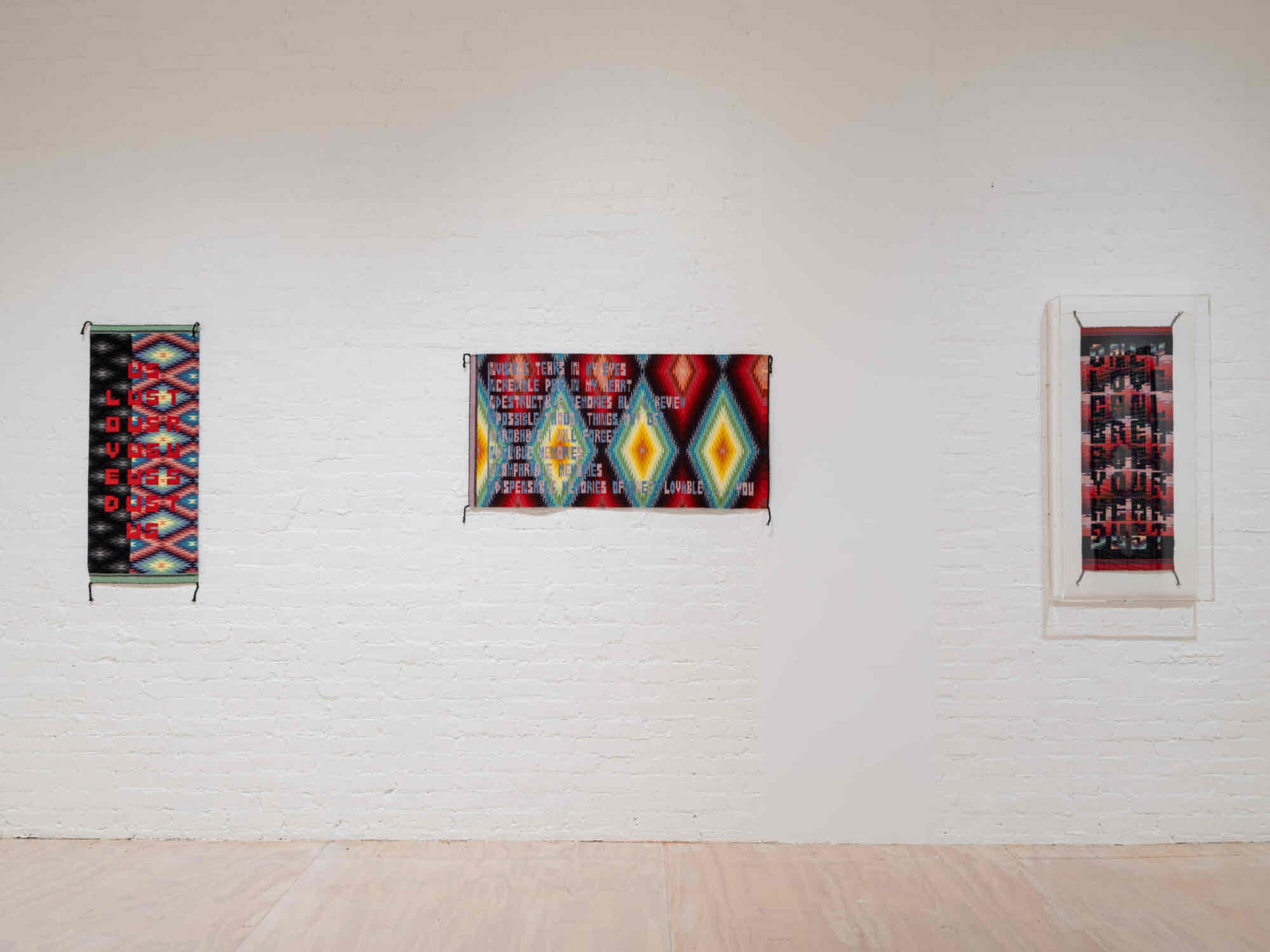
Installation view of Melissa Cody: Webbed Skies, on view at MoMA PS1 from April 4 through September 2, 2024. Photo: Kris Graves
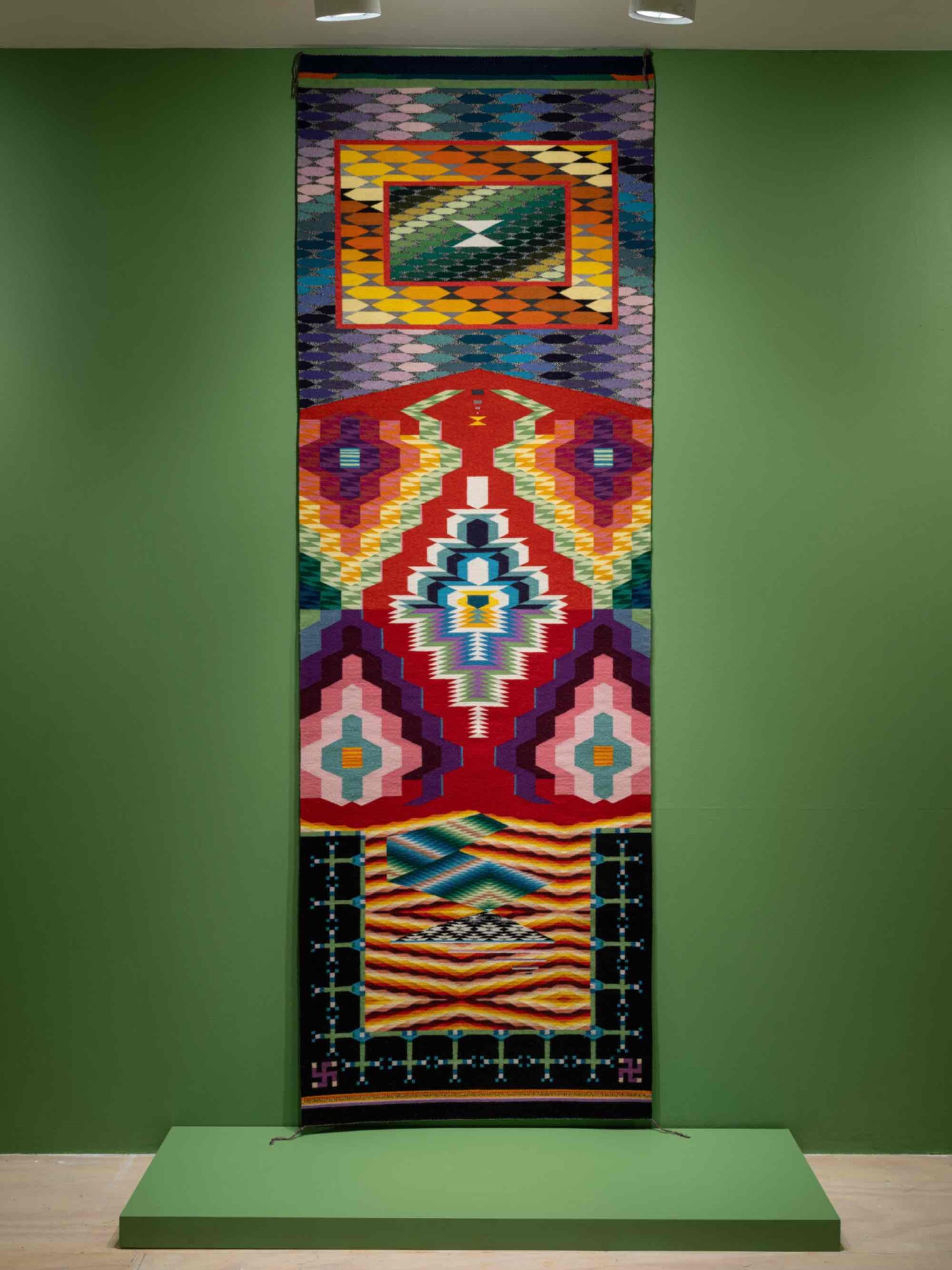
Melissa Cody. The Three Rivers. 2021. Wool warp, weft, selvedge cords, and aniline dyes. Installation view of Melissa Cody: Webbed Skies, on view at MoMA PS1 from April 4 through September 2, 2024. Photo: Kris Graves
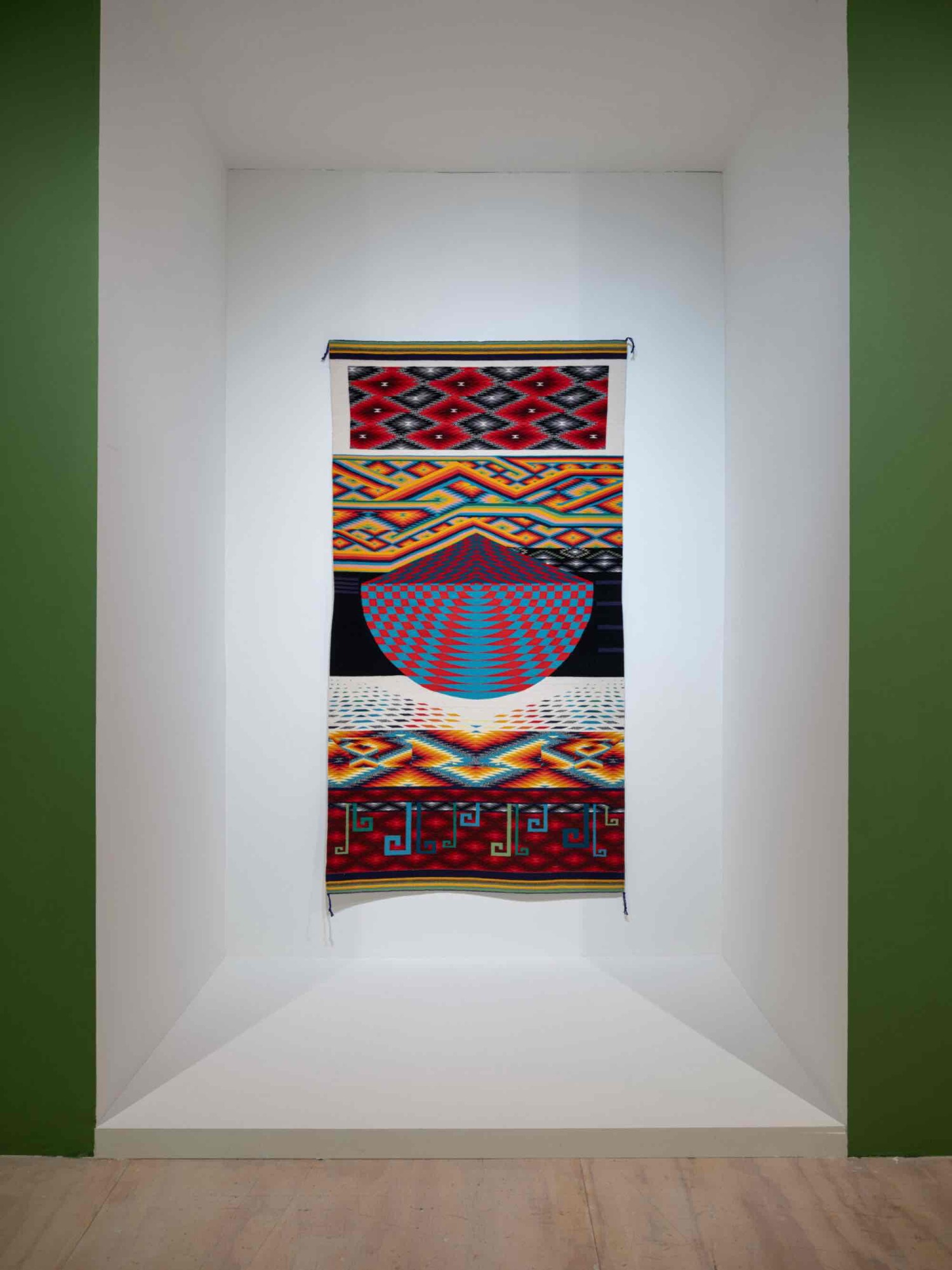
Melissa Cody. World Traveler. 2014. Wool warp, weft, selvedge cords, and aniline dyes. Installation view of Melissa Cody: Webbed Skies, on view at MoMA PS1 from April 4 through September 2, 2024. Photo: Kris Graves
—MoMA PS1 presents the first major solo exhibition of fourth-generation Navajo/Diné weaver Melissa Cody (b. 1983, No Water Mesa, Arizona), coorganized with the Museu de Arte de São Paulo Assis Chateaubriand (MASP). On view from April 4 through September 9, 2024, Melissa Cody: Webbed Skies spans the last decade of her practice, showcasing over 30 weavings that include a major new work made for the exhibition. Using longestablished weaving techniques and incorporating new digital technologies, Cody combines traditional Navajo symbols and patterns with references ranging from Arizona landscapes to video games. Honoring the medium’s histories, Cody’s works underscore critical conversations around placemaking through resilience and ingenuity.
The title of the exhibition, Webbed Skies, refers to the sky as a unifying element of all territories, connecting distinct narratives and methods of coexistence beyond borders.While adept at myriad styles of weaving, Cody primarily engages with the Germantown Revival movement, which emerged after the tragic period known as the Long Walk (1863–68). With the aim to expel the Navajo people from their territory, the US military burned homes, damaged fields, and killed livestock, forcing over 10,000 people to migrate hundreds of miles and enter a military camp. Along the way, weavers devised strategies to continue working with available means, unraveling supplied blankets and using the yarn for weaving. The commercially produced blankets came from Germantown, Pennsylvania, where the introduction of synthetic colors opened new horizons of experimentation within the context of confinement, a method crucial to Navajo cultural resistance. While acknowledging this history and working on a traditional Navajo loom, Cody’s masterful works exercise experimental palettes and patterns that animate through reinvention, reframing traditions as cycles of evolution.
Utilizing enduring and evolving techniques, Cody addresses the transformations that Navajo tapestry has undergone as a form of reconnecting to ancestral land and knowledge. The tonal transitions in Germantown Sampler (2011) recall colors of the Germantown Navajo wool, an allusion to the way creativity has been used in resistance against colonial erasure. Deep Brain Stimulation (2011) borrows imagery taken from her ailing father’s Parkinson’s treatments, introducing modern technologies such as medical imaging into her visual lexicon. Disrupting colonial interpretations of Navajo production, Navajo Transcendent (2014) reimagines the whirling log, a spiritual symbol drawn from Diné healing imagery. The exhibition advances conversations around Indigenous futurity and provides a context to explore the complexity of Indigenous materials, techniques, and cosmologies.
Melissa Cody is a Navajo textile artist and enrolled member of the Navajo nation. Cody grew up on a Navajo Reservation in Leupp, Arizona and received a Bachelor’s degree in Studio Arts and Museum Studies from Institute of American Indian Arts, Santa Fe. Her work has been featured in The Barnes Foundation, Philadelphia (2022); Crystal Bridges Museum of American Art, Bentonville, AR (2021); National Gallery of Canada, Ottawa (2019–2020); Museum of Northern Arizona, Flagstaff (2019); SITE Santa Fe (2018–19); Ingham Chapman Gallery, University of New Mexico, Albuquerque (2018); Navajo Nation Museum, Window Rock (2018); and the Museum of Contemporary Native Arts, Institute of American Indian Arts, Santa Fe (2017–18). Cody’s works are in the collections of the Stark Museum of Art, Orange, Texas; the Minneapolis Institute of Arts; and The Autry National Center, Los Angeles. In 2020, she earned the Brandford/Elliott Award for Excellence in Fiber Art.
The exhibition is curated by Isabella Rjeille, Curator, MASP, and Ruba Katrib, Curator
The title of the exhibition, Webbed Skies, refers to the sky as a unifying element of all territories, connecting distinct narratives and methods of coexistence beyond borders.While adept at myriad styles of weaving, Cody primarily engages with the Germantown Revival movement, which emerged after the tragic period known as the Long Walk (1863–68). With the aim to expel the Navajo people from their territory, the US military burned homes, damaged fields, and killed livestock, forcing over 10,000 people to migrate hundreds of miles and enter a military camp. Along the way, weavers devised strategies to continue working with available means, unraveling supplied blankets and using the yarn for weaving. The commercially produced blankets came from Germantown, Pennsylvania, where the introduction of synthetic colors opened new horizons of experimentation within the context of confinement, a method crucial to Navajo cultural resistance. While acknowledging this history and working on a traditional Navajo loom, Cody’s masterful works exercise experimental palettes and patterns that animate through reinvention, reframing traditions as cycles of evolution.
Utilizing enduring and evolving techniques, Cody addresses the transformations that Navajo tapestry has undergone as a form of reconnecting to ancestral land and knowledge. The tonal transitions in Germantown Sampler (2011) recall colors of the Germantown Navajo wool, an allusion to the way creativity has been used in resistance against colonial erasure. Deep Brain Stimulation (2011) borrows imagery taken from her ailing father’s Parkinson’s treatments, introducing modern technologies such as medical imaging into her visual lexicon. Disrupting colonial interpretations of Navajo production, Navajo Transcendent (2014) reimagines the whirling log, a spiritual symbol drawn from Diné healing imagery. The exhibition advances conversations around Indigenous futurity and provides a context to explore the complexity of Indigenous materials, techniques, and cosmologies.
Melissa Cody is a Navajo textile artist and enrolled member of the Navajo nation. Cody grew up on a Navajo Reservation in Leupp, Arizona and received a Bachelor’s degree in Studio Arts and Museum Studies from Institute of American Indian Arts, Santa Fe. Her work has been featured in The Barnes Foundation, Philadelphia (2022); Crystal Bridges Museum of American Art, Bentonville, AR (2021); National Gallery of Canada, Ottawa (2019–2020); Museum of Northern Arizona, Flagstaff (2019); SITE Santa Fe (2018–19); Ingham Chapman Gallery, University of New Mexico, Albuquerque (2018); Navajo Nation Museum, Window Rock (2018); and the Museum of Contemporary Native Arts, Institute of American Indian Arts, Santa Fe (2017–18). Cody’s works are in the collections of the Stark Museum of Art, Orange, Texas; the Minneapolis Institute of Arts; and The Autry National Center, Los Angeles. In 2020, she earned the Brandford/Elliott Award for Excellence in Fiber Art.
The exhibition is curated by Isabella Rjeille, Curator, MASP, and Ruba Katrib, Curator
